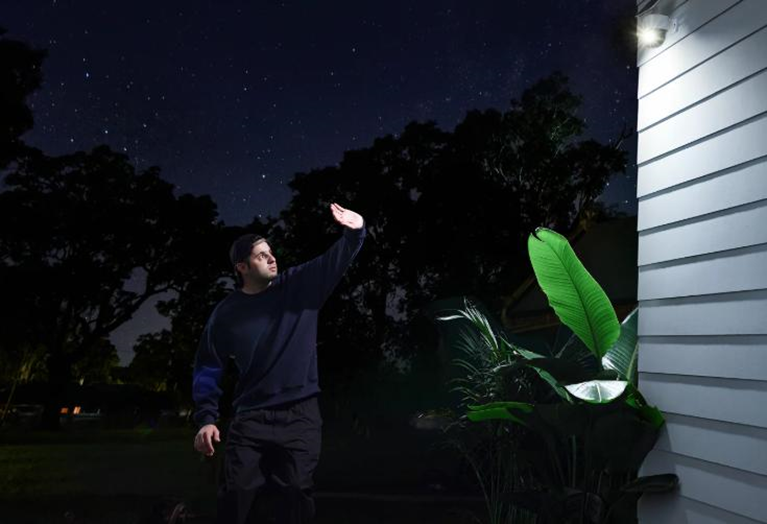PTZ (Pan-Tilt-Zoom) cameras stand out in surveillance for their ability to move and focus dynamically, making them ideal for monitoring large or active areas. Unlike fixed cameras, they combine mobility with high-quality imaging, thanks to a set of integrated components working in sync. From capturing clear footage to swiveling across a wide range, each part plays a critical role in their functionality. Understanding these components helps users select the right PTZ camera, troubleshoot issues, and maximize their performance. This article breaks down the main parts that power PTZ cameras, explaining how they enable pan, tilt, zoom, and reliable 24/7 surveillance.

Optical Components for Clear Imaging
Lens and Image Sensor
The optical system is the foundation of a PTZ camera’s ability to capture sharp footage. At its core is a zoom lens, which allows magnification of distant objects. Most PTZ cameras use optical zoom (10x to 30x), which adjusts lens elements to enlarge details without losing resolution—essential for identifying faces or license plates from far away. Behind the lens lies the image sensor, typically a CMOS (Complementary Metal-Oxide-Semiconductor) chip. This sensor converts light into digital signals, with larger sizes (e.g., 1/2.8 inches) capturing more light for better low-light performance. Resolutions range from 2MP (1080p) to 8MP (4K), ensuring footage remains clear even when zoomed in. Together, the lens and sensor determine the camera’s field of view, light sensitivity, and detail-capturing capability—key for effective surveillance.
Low-Light and Night Vision Features
PTZ cameras are equipped with advanced components that maintain clear visibility even in low-light or nighttime conditions. Many models feature IR LEDs (Infrared Light-Emitting Diodes) arranged around the lens, which emit invisible infrared light that the sensor detects, producing sharp black-and-white footage even in total darkness. Depending on the model, the IR range can extend from 100 to 300 feet. Some advanced PTZ cameras use starlight sensors, capable of amplifying minimal ambient light to deliver color images in near-darkness, as low as 0.001 lux. Additionally, WDR (Wide Dynamic Range) balances bright and dark areas in high-contrast environments, such as sunlit entrances, ensuring details remain visible. Together, these technologies allow PTZ cameras to deliver reliable, round-the-clock surveillance performance.

Mechanical Components for Movement
Pan-Tilt Motors and Drive Mechanism
The defining feature of PTZ cameras—their movement—is powered by precision motors. Two motors control motion: one for horizontal panning (360-degree swivel) and another for vertical tilting (-90 to +90 degrees). Stepper motors move in small increments for precise preset positions, while servo motors enable smooth movement for tracking objects. A drive mechanism (gears or belts) translates motor power into motion, ensuring smooth, vibration-free swiveling. Durability is key: motors are sealed in weatherproof enclosures for outdoor use, with shock absorption to handle vibrations. This system allows PTZ cameras to cover a wide area, making them ideal for large spaces like warehouses or stadiums.
Housing and Mounting Structure
The housing of a security camera plays a crucial role in protecting internal components from physical damage, harsh weather, and tampering. Outdoor cameras typically feature rugged, IP66-rated casings that are dust-tight and resistant to heavy rain, whereas indoor models employ lighter, more streamlined designs that blend seamlessly with interiors. Equally important is the mounting structure, which secures the camera to poles, ceilings, or walls. Built from durable steel or aluminum, these mounts often include adjustable brackets for precise angle control and vibration resistance. Some designs also integrate cable management to conceal power and network wires, improving appearance while protecting connections. Together, housing and mounting ensure durability, safety, and stable positioning.
Electronic Components for Control
The circuit board functions as the camera’s “brain,” linking all components and processing critical data. It houses a microprocessor that manages pan, tilt, and zoom movements, encodes video using formats like H.265 for efficient storage, and ensures network connectivity through Ethernet or Wi-Fi for remote monitoring. Many advanced models also support PoE (Power over Ethernet), allowing a single cable to deliver both power and data for simplified installation. Complementing this, the control module interprets user inputs from apps or management systems and directs signals to motors and lenses. With support for protocols like ONVIF, it ensures seamless integration, preset positions, and intelligent features such as auto-tracking.
Conclusion
PTZ cameras rely on a combination of optical, mechanical, and electronic components to deliver flexible, high-performance surveillance. The lens and image sensor capture sharp, detailed footage, while precision motors enable smooth pan, tilt, and zoom movements that cover wide areas with ease. Advanced electronics and processing software further enhance clarity, adjust for lighting conditions, and support smart features like motion tracking. Together, these parts create a system that offers both versatility and reliability. By understanding how each component contributes, users can better select the right PTZ camera to ensure effective monitoring of large or high-traffic areas, day and night.
